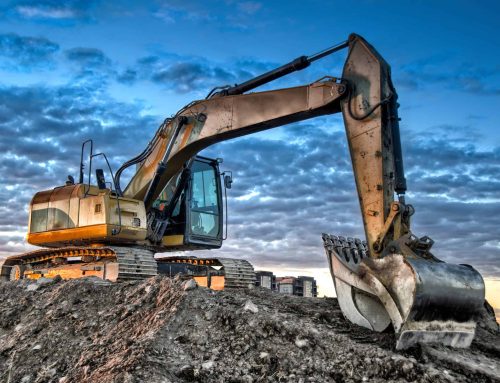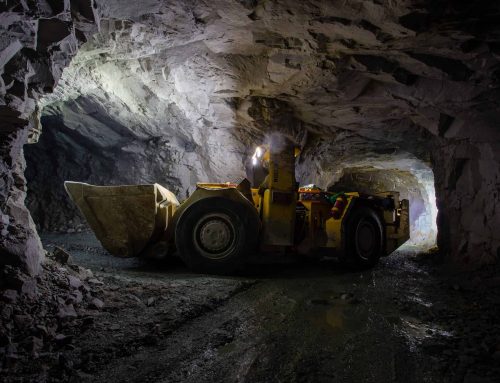The risk of vehicle fires poses a significant threat, especially for heavy machinery and other commercial vehicles. In this article, we delve into the world of commercial vehicle fire suppression systems, exploring in depth their mechanisms and showcasing their crucial role in safeguarding lives and valuable assets.
The Unique Challenges of Commercial Vehicles
Commercial vehicles, including heavy machinery, buses, and trucks, face distinctive challenges that necessitate specialized fire safety measures. The engines of these vehicles operate under demanding conditions, making them susceptible to overheating, electrical malfunctions, and other fire hazards. Recognizing these challenges, the industry has developed tailored solutions to address the specific needs of commercial vehicle fire safety.
How Commercial Vehicle Fire Suppression Systems Operate
Commercial vehicle fire suppression systems are intricate mechanisms designed to detect, respond to, and suppress fires in a timely and effective manner. From a technical standpoint, these systems integrate various components and advanced technologies to ensure the safety of heavy machinery and other commercial vehicles. Let’s break down the technical aspects of how commercial vehicle fire suppression systems operate:
- Detection Systems:
-
- Heat Sensors: Commercial vehicle fire suppression systems commonly incorporate heat sensors strategically placed in critical areas such as the engine compartment. These sensors continuously monitor temperature levels.
- Smoke Detectors: Advanced smoke detectors are used to identify the presence of smoke, signaling a potential fire. These detectors rely on optical or ionization technology for accurate and rapid detection.
- Infrared Sensors: In some systems, infrared sensors are used to detect anomalies in heat radiation, providing an additional layer of precision in early fire detection.
- Activation Mechanism:
-
- Automatic Activation: Upon detecting a potential fire hazard, the system automatically triggers the activation mechanism. This can involve the rapid release of a stored energy source, initiating the suppression process.
- Manual Activation: In certain situations, commercial vehicle fire suppression systems allow for manual activation. This feature enables operators to take immediate action if they identify a fire threat before the automatic system engages.
- Extinguishing Agents:
-
- Dry Chemicals: Many commercial vehicle fire suppression systems deploy dry chemical agents, such as ABC powder or potassium bicarbonate. These chemicals interrupt the chemical reaction of the fire, effectively suppressing flames.
- Liquid Agents: Some systems use liquid agents, including water mist or specialized fire suppression liquids. These agents work by cooling the affected area and reducing the temperature to extinguish the fire.
- Clean Agents: Halocarbon-based clean agents, like FM-200 or Novec 1230, are chosen for their ability to suppress fires without leaving residue or causing damage to sensitive equipment.
- Distribution Systems:
-
- Network of Pipes or Tubing: Commercial vehicle fire suppression systems incorporate a network of pipes or tubing strategically routed throughout the engine compartment and other vulnerable areas.
- Nozzles and Dispensers: These pipes are equipped with nozzles or dispensers that ensure the even distribution of the extinguishing agent. The placement of these components is crucial to cover the entire space effectively.
- Pressure Systems:
-
- High-Pressure Systems: Some commercial vehicle fire suppression systems operate at high pressure, using pressurized containers to release the extinguishing agent rapidly.
- Low-Pressure Systems: Others may use low-pressure systems, where the agent is released through a network of pipes connected to a reservoir.
- Control and Monitoring Systems:
-
- Central Control Panel: Commercial vehicle fire suppression systems often feature a central control panel that provides real-time monitoring and control. This panel may display information on system status, pressure levels, and any detected anomalies.
- Integration with Vehicle Electronics: Integration with the vehicle’s electronic systems allows for seamless communication, ensuring that the fire suppression system works in harmony with the overall safety features of the commercial vehicle.
By combining these technical elements, commercial vehicle fire suppression systems create a comprehensive safety net, rapidly identifying and addressing fire threats to protect both the vehicle and its occupants. The integration of advanced detection technologies, precise activation mechanisms, and effective extinguishing agents ensures these systems are reliable safeguards against the devastating consequences of fires in commercial vehicles.
Examples of Commercial Vehicle Fire Suppression Systems
- Kidde Commercial Vehicle Fire Suppression System
- Designed for heavy-duty applications, this system utilizes advanced detection technologies and deploys a dry chemical extinguishing agent to suppress fires quickly.
- It is commonly employed in mining equipment, construction vehicles, and other heavy machinery.
- Ansul LVS Liquid Agent Fire Suppression System
- Tailored for commercial vehicles, this system employs a liquid extinguishing agent that effectively cools and suppresses fires while minimizing damage to sensitive equipment.
- It is often used in buses, public transportation vehicles, and other large commercial fleets.
- FirePro Condensed Aerosol Fire Suppression System
- This system is known for its compact design and efficient use of condensed aerosol technology.
- It is suitable for various commercial applications, including buses, trucks, and agricultural machinery.
Fire Systems, Inc.
Commercial vehicle fire suppression systems represent a critical aspect of ensuring safety for heavy machinery and large commercial fleets. By addressing the unique challenges posed by these vehicles and incorporating advanced technologies, these systems play an indispensable role in minimizing the impact of fires on valuable assets and, most importantly, protecting the lives of operators and potential passengers. As the commercial vehicle industry continues to evolve, the ongoing commitment to enhancing fire safety standards ensures that these systems remain at the forefront of innovation, contributing to a safer and more secure transportation landscape.
Let Fire Systems, Inc. be your partner in protecting your commercial vehicles and/or heavy machinery vehicles. We’ve been installing, inspecting, maintaining, and repairing vehicle suppression systems for almost 40 years. Our family-owned, family-operated fire protection company has a team of experts who only specialize in vehicle fire suppression. We have the expertise, resources, and knowledge that you need to protect your fleet of heavy machinery from the dangers of fire. Contact us today at 770-333-7979 or visit our website for more information. We look forward to working with you.





